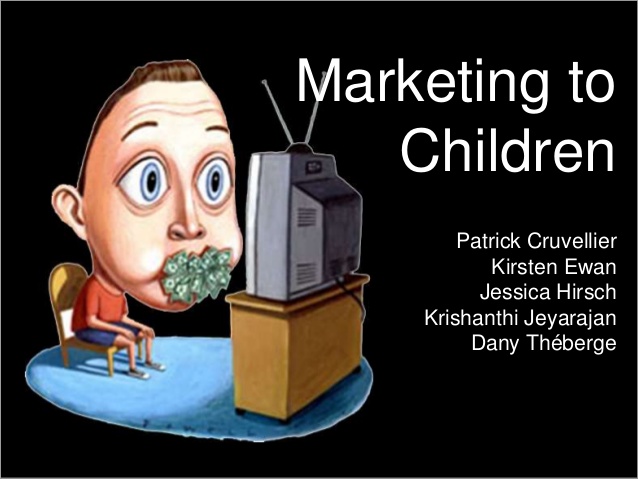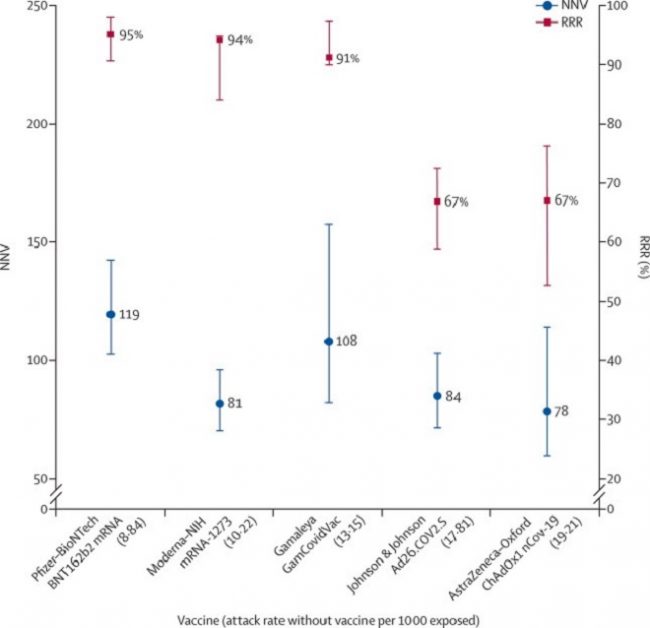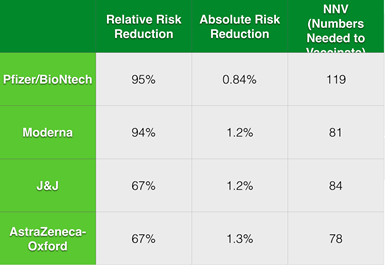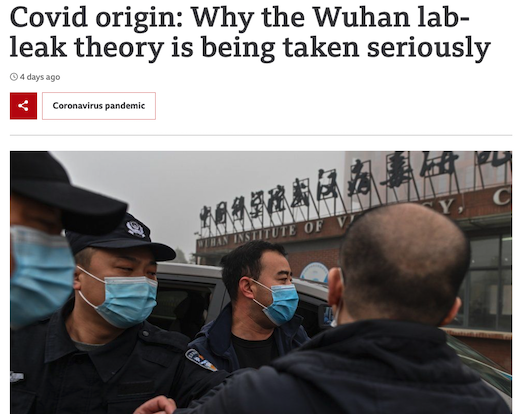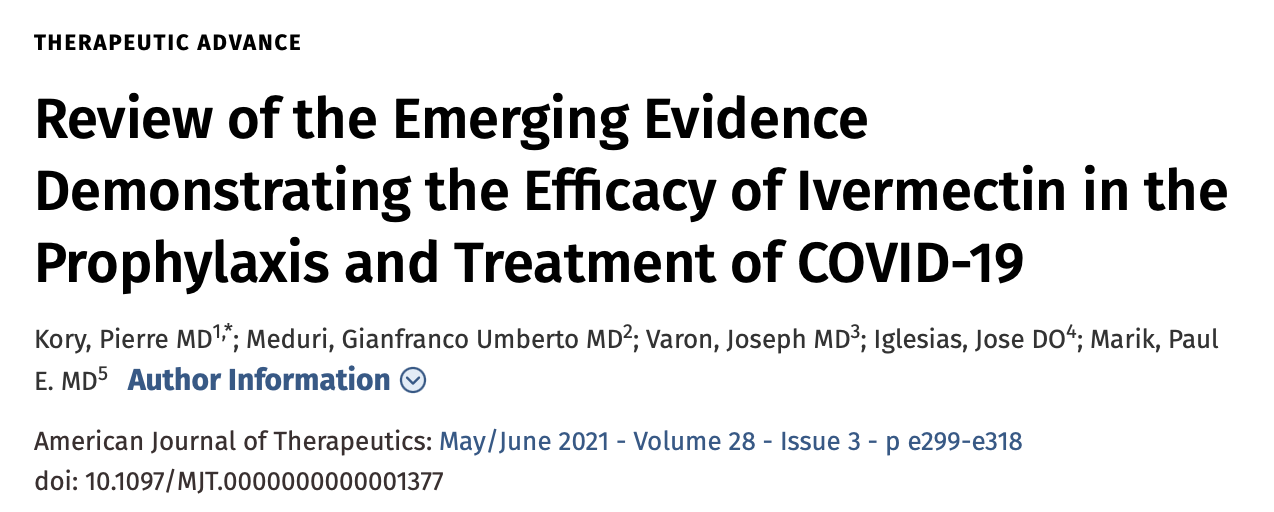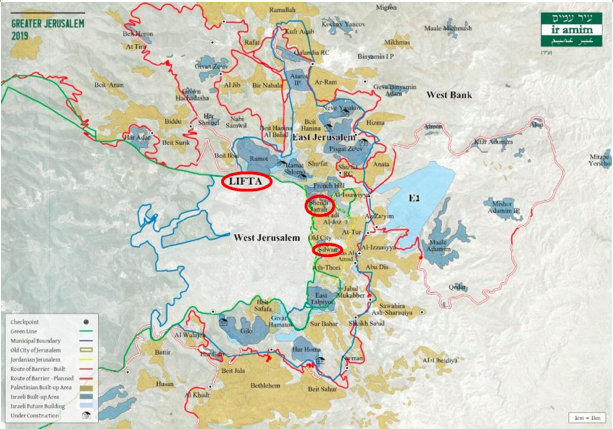Women’s Rights and Debt Oppression in Central Asia
June 4th, 2021 by Dr Elmira Satybaldieva
All Global Research articles can be read in 51 languages by activating the “Translate Website” drop down menu on the top banner of our home page (Desktop version).
Visit and follow us on Instagram at @crg_globalresearch.
***
On 15 April 2021 about 15 women seized a local state administration building in Kyrgyzstan to demand a debt relief and a stop to housing repossessions. Barricading themselves inside the building, the women in black mournful headscarves, threatened to pour gasoline over their bodies and set themselves alight if the country’s Prime Minister did not arrive to negotiate with them. Gas cylinders were placed along the office windows and gasoline on floors set the scene for a large explosion. Struggling to breathe in the room full of toxic fumes, the women announced: ‘We’re sick of financial slavery! Eradicate the usury!’ These were at the end of their tether after years of struggling against financial oppression.
‘My Gotovy szhech sebya!’ translated ‘We are ready to set ourselves alight.’ (Source: Kaktus Media)
In 2019, Kyrgyzstan had the fifth highest real lending interest rate in the world. Many rural women have been protesting against debt, housing repossessions and exorbitant interest rates for the past 13 years. In 2016, their anti-debt struggles culminated in protests in front of the US Embassy in Bishkek, where they blamed the United States Agency for International Development (USAID) and the World Bank’s International Finance Corporation (IFC) for creating and funding exploitative microcredit companies in the country. In neighbouring Kazakhstan, urban residents of Nur-Sultan and Almaty held numerous anti-debt protests in front of the central bank, blaming it for predatory lending arising from Western credit flows.
Photo by an anti-debt movement member. Protests outside the US embassy in Kyrgyzstan held on 26 May 2016
The Covid-19 pandemic exacerbated the debt oppression in the region by causing job losses. In Kyrgyzstan, thousands of migrants returned home, causing unprecedented decrease in remittances. The Kyrgyzstani state could not offer income support to its work force, of which 75% is self-employed. The pandemic pushed an additional 700,000 people into poverty, worsening the existing situation where 38% of the population is classified as poor. In oil rich Kazakhstan, 42% of the population lost income, and applied for income support of 42,500 tenge (US$99). The government made a one-off payment in full in the first month, and a partial payment in the second month. In order to provide some relief, the central banks in the region recommended loan payments to be deferred up to three months. But commercial banks and microfinance institutions (MFIs) continued to charge interest on outstanding loans and commission fees for changing loan terms. Despite rising default rates, they refused to write off debt or suspend the accrual of interest, deepening indebtedness.
How did the debt problem begin?
When the Central Asian countries gained their independence in 1991, much of the population did not have personal or commercial debt. The Soviet economic system prohibited lending at interest, viewing it as speculative gains. In the Soviet economy, ‘non-labour’ (or unearned) income was condemned and strictly regulated. But after the disintegration of the Soviet Union, Central Asian countries experienced a severe shortage of capital, and they borrowed from US and other Western financial institutions at high interest rates. The near monopoly on credit coerced Central Asian citizens, especially low-income groups, into high risk and exploitative credit relations.
Starting in the mid-1990s, international donors and investors developed the microcredit industry in Kyrgyzstan by funding four MFIs. The International Finance Corporation and other international donors mandated these MFIs to become fully commercialized to achieve high returns on equity. The average interest rate was 44%. By 2010, these MFIs served 77% of the microcredit borrowers, and controlled 52% of the microcredit portfolio. By 2016, three of them became fully-fledged banks, and continued to have a significant portfolio of microlending.
In Kazakhstan, the oil boom in early 2000s fueled a rapid expansion of credit in the banking sector. By 2007, Kazakhstani banks amassed external debt of US$46 billion, or 44% of gross domestic product (GDP). About 70% of loans were linked to the real estate sector that skyrocketed house prices. Housing costs in Nur-Sultan and Almaty became more unaffordable than in exclusive cities such as San Francisco and Vancouver. Today, over 80% of Kazakhstanis are in debt with mortgage and consumer loans.
In both countries, the governments deregulated the financial system by allowing banks and MFIs to determine themselves their own size of loans, interest rates, penalties and commission fees, and to operate with very minimum capital and licensing requirements. Bolstered by the neoliberal legal framework, some lenders charged interest rates as high as 180%. Penalties sometimes doubled the principal loan, and some lenders had up to 25 different commission fees. In addition, financial regulations in Kazakhstan and Kyrgyzstan minimized legal protections for borrowers. Individual bankruptcy laws were blocked by the financial industry. In cases of default, the courts viewed credit as lenders’ property and assets, and justified its return on the basis of the rule of law and the sanctity of the contract.
Indebting women
In Central Asia, women constitute a large share of debtors. Like in many parts of the Global South, international donors and investors targeted vulnerable women for microcredit lending. This reflected a global neoliberal strategy for debt-based growth, which recasted marginalized groups as a high-yielding investment opportunity. High interest loans were sold as an effective way to combat poverty, empower women, and stimulate entrepreneurial activity. Yet when pressed to explain the obvious tension between the social framing and for-profit lending, one of the managers at the International Finance Corporation in Bishkek defensively responded, ‘We are not a charity but an investment bank! So of course, we need to make a profit.’ Perversely, by indebting poor women, international investors gained both a handsome profit and a public image of do-gooders.
For many women loans were not a matter of choice, but a necessity as a result of cuts to state expenditure on social and economic programs. The cumulative impact of market ‘reforms’ in the region facilitated poor women’s dependence on high interest credit. First, the privatization of state enterprises significantly reduced pay and job opportunities for women. If in 1988 the Soviet Union had the highest female labour force participation rate of any industrialized society (with 90% of working-age women engaged in full-time work or study), by 2017 Kyrgyzstan’s female participation rate fell to 48 %. For instance, in 1995, fewer than 10,000 people worked in Kyrgyzstan’s light industry sector, which used to employ over 100,000 mostly female workforce during the Soviet period. Moreover, the privatization of agriculture and rural land made women asset poor. Most assets, including 80% of land and 61% of real estate were transferred to a small minority of owners, mostly men. Many women, who were previously employed as factory and agricultural workers, and as teachers and healthcare specialists, were forced into petty trading through Western sponsored microcredit schemes. The commodification of labor and poor income fueled the expansion of debt.
Second, many women borrowed money to pay for services, such as health care and education, which were previously available for free. Key social services saw significant cuts in state spending, which not only reduced public sector pay but privatized and commodified basic necessities, enabling affluent groups to access better quality services while low-income groups were deprived of them. In Kyrgyzstan, the commodified provision of reproductive care led to the highest maternal mortality rate in the post-Soviet space, with 90% of death found to be preventable. A 2021 survey of online microcredit borrowers in Kazakhstan showed that 29% of respondents took out loans to pay for emergency expenses, 21% to make ends meet, and 16% to pay off debt on bank loans. The rest used the loans to pay for medical treatment, utilities, educational fees. Only a small minority of loans was linked to buying consumer goods.
Third, the withdrawal of state provision of free housing, and the adoption of mortgage-based housing schemes resulted in fewer new affordable housing units, and an inflation of real estate prices. High cost of mortgages has failed to meet most people’s social needs and has been a key driver of economic disparity. Currently over 6 million out of 8.4 million economically active population in Kazakhstan cannot afford to buy a house. Many households took out US dollar-denominated mortgage loans at 15-20% interest rates as their only means of obtaining housing.
In Central Asia credit/debt rather than social rights has enabled people to access basic goods. Responsibilities for well-being have shifted from the welfare state to individuals through private lenders. Debt has become foundational, a way of life. Women, in particular, have been forced into debt to cope with the increasing costs of a commodified society and as a way of staying afloat or getting ahead in life.
Debt, dispossession and death
Almost three decades of debt expansion has produced immense misery and violence in the lives of many ordinary people in the region. After the 2008 financial crisis, over 70,000 Kazakhstanis defaulted on their mortgage loans and 62,889 new apartment owners were left stranded with their housing complexes partly built. In Kyrgyzstan, over 30% of all borrowers were over-indebted. A director of a microfinance association in Kyrgyzstan admitted that the majority of borrowers paid back ‘at the cost of sacrificing their food security, education and health, which obviously caused them immense misery.’ There has been a very little take-up of small and medium-sized enterprises by women in Kyrgyzstan.
Faced with an increase in non-payments, the financial sector pursued an aggressive strategy of foreclosures by undertaking extra-judicial seizure of borrowers’ properties. Until recently, a delay in payment of over a 60-day period allowed lenders to seize the collateral without a court order. In Kyrgyzstan, many borrowers lost their homes over microcredit loans of around US$ 1,000 or so. Unlike in other countries, MFIs in Central Asia secured their small loans with collaterals. Many borrowers did not anticipate being made homeless over small loans.
The rise in evictions caused many borrowers to commit suicides because of overwhelming shame and loss of control. In Kyrgyzstan, during 2011-2012 there were 17 suicides of women, who were facing repossessions. In Kazakhstan, it was common to read news headlines of debt-related tragedies. In 2011, Marat Nurkenov, aged 39, jumped off from a 9-storey building in Pavlodar, when law enforcement agents were evicting his parents from the apartment. The same year Kezhegul Alinkulova, a mother of five children, set herself alight during a forced eviction in Almaty. In 2014, 27 indebted military personnel had taken their own lives. In 2015, Kazakhstan’s Ministry of Defense started a registry of heavily indebted personnel as a suicide prevention strategy in the army, officially acknowledging that debt-related suicides had become a major problem.
The death of a borrower does not dissolve their debt. Existing banking and microfinance laws make family members responsible for loans that are secured against property registered under their names. In such cases, banks and MFIs collect the remaining balance on the debt from surviving family members. In Kyrgyzstan, a borrower recounted how collectors would show up at funerals, pulling aside the crying family members, and saying, ‘Make sure to give us the money that people have brought for the funeral.’ It is a custom for visitors to donate money to the family of the dead person to help pay for expenses. The dead collectors’ lack of sympathy for the grieving family members, and the blatant disrespect for social customs shocked and infuriated many. Local activists tried to incriminate banks and MFIs for driving borrowers to their death but found it difficult to prove. Financial institutions were not held responsible even when death notes were left behind.
Debt, gendered violence and fraud
The daily lives of the indebted are filled with intense feelings of shame, fear and anxiety because shame and other aggressive debt collection methods are employed to maximize the rate of repayment. In Central Asia, it is common for debt collectors to publicly humiliate borrowers and threaten them with legal action or bodily harm. One of the female borrowers, who worked as a schoolteacher, described how debt collectors came to her school and shamed her in front of her students and the school director. The intense level of public humiliation and intimidation was a novel experience for many borrowers. They recounted feelings of tremor, heart palpitations and panic attacks every time someone knocked on their doors or the phone rang.
Local debt recovery tactics employed gendered violence. The financial industry often exploited cultural norms to shame and dis-honour women. In Kyrgyzstan, some lenders and debt collectors involved regional governors and the courts of male elders (aksakals) to shame women for missing loan repayments. In some cases, the damage to women’s social reputation and honour led to them being condemned by family members and being social marginalized. The mechanism of shaming proved to be very effective, explaining the paradox of a high repayment rate by vulnerable women.
To ensure repayments, MFIs promoted group-based loans on female borrowers. Group loans intensified social scrutiny in comparison to individual market transactions between lenders and borrowers. When members of the family or social network turned into quasi-debt collectors, it personalized debt and discipline, exacerbating the feeling of shame. Group loans produced tensions and conflicts within close-knit communities when someone defaulted. In one case, a group of women borrowers were greatly distressed by ‘the pain they inflicted on each other’ when one of them had to use her meager pension to meet the liability for the group debt.
Since 2006, in Kazakhstan, illegal private debt collection agencies have grown. Although there are only 193 officially registered private debt collection agencies, at least a thousand operate illegally in the country. In 2019, Kazakhstani banks sold problem loans worth 611.6 billion tenge to collection agencies. These agencies commit gendered violence on the basis of enforcing the law and defending the sanctity of contracts.
For instance, the Kazakhstani social media have many video and voice recordings that expose agencies’ abuse and physical assaults. In 2019, one video attracted a lot of attention and criticisms. It showed a young male collector from an unregistered agency Almaty Collection Group, intimidating a young female debtor to repay the loan, and calling her ‘dirt-eating trash’ and ‘a mistake to be born.’ When the young woman filed a legal complaint against the debt collector with the help of a law company, he and two other assailants attacked a senior law partner, breaking his nose and ribs. In 2019, the Kazakhstani courts reviewed 353 complaints against debt collectors. The maximum punishment for debt collectors, who are guilty of violating rules and regulations that govern their practices, is 180 hours of correctional labor. The judiciary has largely sanctioned gendered violence in defense of the interests of lenders. The private debt collectors can act with impunity, using threats and physical force to extract debt.
Recently, private debt collection firms were able to open in parallel private law enforcement agencies to increase their coercive powers. This development was preceded by contracting out law enforcement services to private enforcement agencies. Private debt collection firms gained more powers by doubling up as private law enforcement agencies. Now debt collectors can access state and commercial databases on debtors, and can use extensive legal powers, such as seizure of property, sale at auction, access to bank accounts, and imposition of travel restrictions. Agencies’ access to records on debtors has been responsible for the development of sophisticated fraudulent tactics to ‘recover’ debt. For instance, in a recent case, a debtor, a mother of five children, was on a waiting list for state subsidized rental housing. One day, she received a telephone call informing that her application had been approved, but the paperwork was on hold because of her outstanding loan. She was urged to borrow money to pay off the bank loan in order to complete the process. After paying off the debt, she learnt that she was scammed by the debt collectors.
Doom or hope?
The debt oppression in Central Asia echoes debt problems in other parts of the world. But the difference is that Central Asian financial industry has employed extreme coercive tactics to make money with little regard to human dignity and well-being. Women have been the biggest victims of the financial cartel. The shaming tactics and intimidation by male debt collectors is a form of gendered violence sanctioned by state and judicial authorities in support of the financial industry.
We do not know the extent of social dispossession caused by the debt peonage. The economic inequality in the region is among the highest in the world. Debt has transferred income from the poor to the rich. Michael Hudson aptly calls interest a regressive form of income distribution. Between 1995-2012, microcredit was responsible for transferring up to US$125 billion from poor communities in the Global South to financial centers in the Global North. This regressive distribution of global wealth was partly achieved at the expense of poor rural women.
The women in Central Asia have tried to resist ‘financial slavery.’ But their anti-debt protests did not achieve meaningful changes to predatory lending practices in Central Asia. The political regimes have suppressed protests. The indebted women are often demonized and stigmatized by the media as unscrupulous and irresponsible borrowers, who lack financial literacy and discipline.
There is a huge power imbalance between lenders and borrowers. The indebted women alone cannot take on the global power of financial institutions. People’s passivity and resignation over the regulation of finance reflect the degree to which the neoliberal moral order came to be accepted as just and natural. To overcome the economic and moral stranglehold of finance over society, progressive supranational institutions and global anti-debt movements are required to regulate financial capital in service of people’s well-being rather than lenders’ economic interests.
For further reading and a detailed account of the anti-debt mobilizations, see her forthcoming book, Rentier Capitalism and Its Discontents (Palgrave Macmillan).
*
Note to readers: Please click the share buttons above or below. Follow us on Instagram, @crg_globalresearch. Forward this article to your email lists. Crosspost on your blog site, internet forums. etc.
Dr Elmira Satybaldieva is a Senior Research Fellow at Conflict Analysis Research Centre, University of Kent. Her main area of research interest is politics in the post-Soviet space, with a particular focus on grassroots activism and international development in Central Asia. She is currently researching Chinese, Russian and western investment strategies in Central Asia and their varied implications for the region. She has been researching the region for over 15 years, and published widely on social movements, development and political economy in the region.
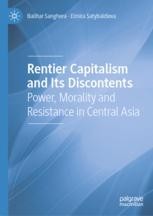 Rentier Capitalism and its Discontents
Rentier Capitalism and its Discontents
Power, Morality and Resistance in Central Asia
Authors: Sanghera, Balihar & Satybaldieva, Elmira
Publisher: Palgrave Macmillan
eBook ISBN: 978-3-030-76303-9
Hardcover ISBN: 978-3-030-76302-2








